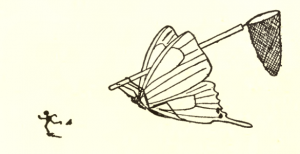
When Retraction Watch began in 2010, our co-founders Ivan Oransky and Adam Marcus quickly realized they couldn’t keep up with the hundreds of retractions that appeared each year. And the problem has only gotten worse — although we’ve added staff, the number of retractions issued each year has increased dramatically. According to our growing database, more than 1300 retractions were issued last year (and that doesn’t include expressions of concern and errata). So to get new notices in front of readers more quickly, we’ve started a new feature called “Caught our Notice,” where we highlight a recent notice that stood out from the others. If you have any information about what happened, feel free to contact us at [email protected].
What caught our attention: This 2014 retraction recently caught the attention of @Dave_TheGunner who called it an “Absolutely perfect retraction notice.” Why? In one line, it says the authors presented data that were impossible to produce. Next question: How did this get by the (ahem) peer review process?
Journal: Journal of Diabetes Research
Authors: Wanchun Shi, Siping Hu, Wenhua Wang, Xiaohui Zhou, Wei Qiu
Affiliations: Huzhou Central Hospital, Zhejiang, China
This article has been retracted as it was found to include fabricated data as phosphorylated protein levels of pAkt cannot be measured by RT-PCR.
Date of Article: October 2013
Times cited, according to Clarivate Analytics’ Web of Science: 3 (once by the notice)
Date of Notice: May 18, 2014
Like Retraction Watch? Consider making a tax-deductible contribution to support our growth. You can also follow us on Twitter, like us on Facebook, add us to your RSS reader, sign up on our homepage for an email every time there’s a new post, or subscribe to our daily digest. Click here to review our Comments Policy. For a sneak peek at what we’re working on, click here. If you have comments or feedback, you can reach us at [email protected].
“This article has been retracted as it was found to include fabricated data as phosphorylated protein levels of pAkt cannot be measured by RT-PCR”
An undergraduate student would know this.